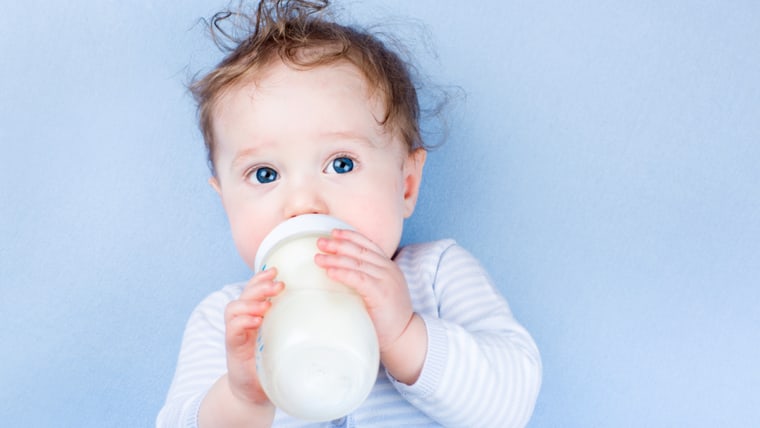It’s well known that dairy is good for all ages, especially kids. Packed with a powerful punch of protein, calcium, vitamin D and other nutrients that many kids don’t get enough of — milk really does a body good. Recently the type of milk you give your kids to drink (and drink yourself) has been called into question. So what is really best for your family: nonfat (skim), low-fat (1 percent), reduced-fat (2 percent) or whole milk?
The answer depends on age
Babies under 1 year should not drink regular cow’s milk, although yogurt and cheese can and should be introduced after 6 months of age.
Once your baby turns 1, you can offer whole or reduced-fat (2 percent) cow’s milk. Children under 2 years of age need the nutrients and healthy fat in whole or reduced-fat milk for brain development. Stick with whole milk unless you have a family history of heart disease, high cholesterol or obesity, or your pediatrician thinks your child is already getting enough healthy fat in his diet.

When your child turns 2...
The discussion really begins when children turn 2. All milk, whether nonfat or whole, contains very similar amounts of protein, vitamins and minerals. The main difference is the fat and calorie content. Many children in the United States today get enough fat and calories in their diet and don’t need the extra fat from dairy. If you want to add healthy fat to your child’s diet, much better choices are nuts, seeds, nut butters, avocado and healthy oils like olive oil.
For this reason, nonfat or low-fat milk is currently recommended for all children age 2 and older. I like my patients to get used to the taste of nonfat and low-fat milk at this age, because whatever they get used to drinking, they will choose to drink when they are older.

Do lower-fat milks lack nutrition?
Many low-fat and nonfat products (like cookies and crackers) earned a bad reputation because companies replaced the fat with sugar and various unhealthy additives. This is not the case for milk, so rest assured. For lower-fat milks, the extra fat is simply removed. Whatever percentage you choose, kids that grow up drinking milk are healthier compared to kids who don’t drink milk. If your family prefers the taste and consistency of reduced fat or whole milk, talk to your pediatrician, as three servings a day of dairy products are recommended for all ages.
It can get confusing at the grocery store, and yes, I do buy three types of milk for my house. My husband, my 10-year-old and I drink nonfat milk, my 8-year-old drinks low-fat milk (he liked the school milk better so I caved) and low-fat chocolate milk, and my 1-year-old drinks whole milk. It’s a lot to buy at the store, but I feel good knowing I’m buying key nutrients that my entire family needs.
Dr. Tanya Altmann is a pediatrician and author, with Beth Saltz, MPH RD, of the new book, "What to Feed Your Baby."